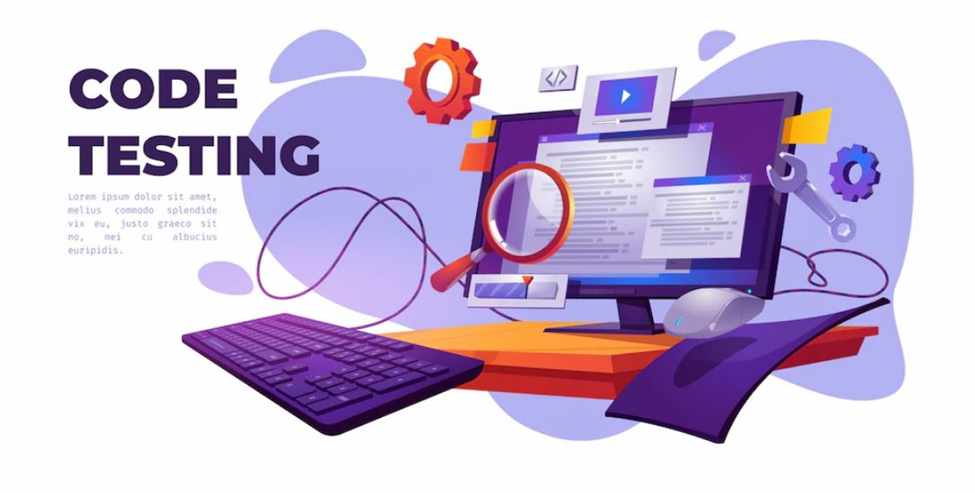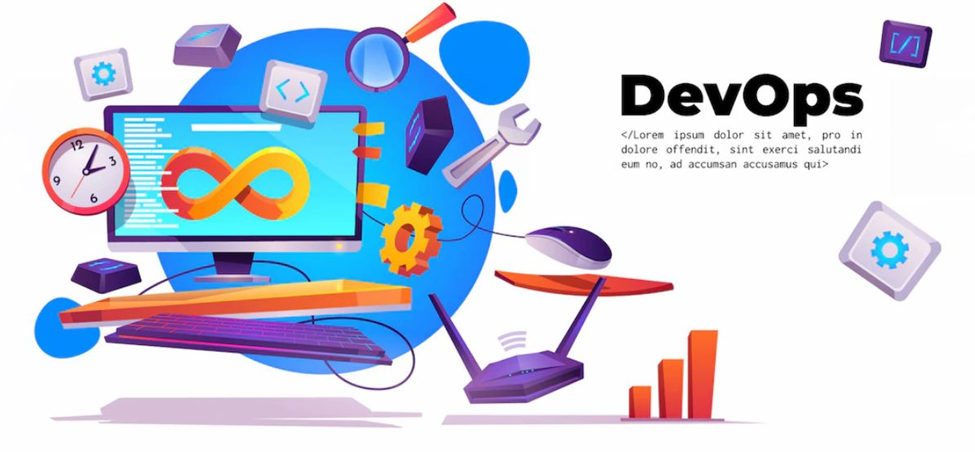
What is Extreme Programming (XP)?
Extreme Programming, which is a software development methodology that has been around for over two decades. It is designed to produce high-quality software quickly and efficiently, and has been shown to be very successful in doing so. Extreme Programming (also known as XP) practices help any project where speed and quality are of the essence. It can help software teams work more efficiently, collaboratively and in an iterative manner to ensure success.
Extreme Programming is also known for its focus on customer satisfaction, which helps to ensure that projects meet or exceed user expectations. Extreme Programming encourages a collaborative approach to software development, with regular feedback loops and an emphasis on continuously improving the system. Extreme Programming emphasizes sustainability and programmer welfare, making sure everyone on the team is well taken care of. Extreme Programming offers a lot of benefits that can help software teams achieve their goals and deliver high-quality products in a timely manner.
In the previous blog we looked at 'What is Lean Software development?'. Let’s look at some of the key XP practices in this blog through the below topics:
XP Process Groups
Extreme Programming is built on the idea of using a set of software development best practices, which are grouped into four main areas:
Fine-Scale Feedback
Pair Programming, Test-Driven Development, Planning Game and Whole Team. This helps to ensure that feedback is provided regularly and accurately to allow for rapid course corrections as needed.
Continuous Process
Continuous Integration, Refactoring or Design Improvement and Small Releases. Extreme Programming is all about continuous improvement, so it's important to have a process in place that allows for incremental improvements over time.
Shared Understanding
Coding Standards, Collective Code Ownership, Simple Design and System Metaphor. Extreme Programming encourages everyone on the team to have a shared understanding of the overall system, and how components fit together.
Programmer Welfare
Sustainable Pace. Extreme Programming emphasizes developing software in a sustainable way, with an emphasis on taking regular breaks to ensure that all team members stay healthy and motivated.
1. Pair Programming
Pair programming is a key element of Extreme Programming, and is the practice of working with a partner to write code. It can be very beneficial, as it allows for two sets of eyes to look at code, find potential problems and come up with solutions. Pair programming can also help developers learn from each other, and can be a lot of fun.
When pair programming, two developers typically take turns working on the same task. One developer will take the lead, with the other acting as a navigator and providing feedback where needed. This can help ensure that code is written more quickly and efficiently, as well as ensuring that all potential problems are identified before they become an issue.
2. Planning Game
The Planning Game is a key part of Extreme Programming, and is used to help ensure that projects are well-organized and on track. It is a way for developers to estimate the work that needs to be done, and to determine how best to achieve their goals.
The Planning Game is played in four rounds, with each round representing a different phase of the project. In the first round, the team members come up with a list of tasks that need to be completed. In the second round, they estimate how much time each task will take to complete. In the third round, they determine which tasks can be completed in the current timeframe. And in the fourth round, they create a schedule based on the tasks that were selected in the previous rounds.
The Planning Game can be a great way for teams to get organized and stay on track. It can also help developers to better estimate how long tasks will take to complete, and can be used as a guide for creating a project schedule.

3. Test-driven Development
Test-driven development is a key element of Extreme Programming, and is the practice of writing tests before code. It can be very beneficial, as it allows for developers to verify that their code is working as expected. Test-driven development can also help developers to write better code, as they are forced to think about how their code will be tested before they write it. Here is an example of how test-driven development might work in practice:
The development team writes a test for a new feature that they want to add to the software. This test specifies the expected behavior and output of the feature, and provides a way to check that it is working correctly.
The team then writes the code for the new feature, making sure that it passes the test that they wrote in step 1.
Once the code is written, the team runs the test again to ensure that the feature is working as expected. If the test passes, it means that the code is correct and the feature can be considered done. If the test fails, it means that there is a problem with the code, and the team needs to fix it and run the test again.
Once the new feature is working correctly, the team adds the code to the main codebase and continues with the next feature or task.
This example shows how test-driven development can help teams to ensure that their code is correct and reliable, and to catch and fix errors early in the development process.
4. Whole Team
The Whole Team is another key element of Extreme Programming, and is the practice of working together as a team to achieve common goals. It can be very beneficial, as it allows for developers to share knowledge and expertise, and helps to ensure that everyone is working towards the same goal.
When using the Whole Team approach, developers typically work together in pairs, with each pair having its own area of expertise. This can help ensure that tasks are completed more quickly and efficiently, and can help prevent problems from occurring. The Whole Team approach can also help to improve communication within the team, and can lead to a more productive work environment.

5. Continuous Integration
Continuous integration is a key element of Extreme Programming, and is the practice of integrating code changes frequently. It can be very beneficial, as it allows for developers to catch potential problems early on. Continuous integration can also help to ensure that code is always in a working state, and helps to prevent conflicts from occurring.
When using continuous integration, developers typically integrate their code changes into a shared repository. This can help ensure that all code is always up-to-date, and can help prevent problems from occurring. Continuous integration can also help to improve communication within the team, and can lead to a more productive work environment.
6. Code Refactoring
Refactoring is a key element of Extreme Programming, and is the practice of improving the design of code without changing its functionality. It can be very beneficial, as it allows for developers to make their code cleaner and easier to understand. Refactoring can also help to prevent problems from occurring down the road.
When refactoring code, developers typically take a small piece of code and rewrite it without changing its functionality. This can help ensure that the code is clean and easy to understand, and can help to prevent problems from occurring.
Example of code refactoring
def square(x) :
if x <= 0 :
print("Incorrect input")
else :
return x*x
def square(x) :
if x <= 0 :
raise ValueError("Incorrect input")
else:
return x*x
7. Small Releases
Small releases are another key element of Extreme Programming, and is the practice of releasing software frequently. It can be very beneficial, as it allows for developers to catch potential problems early on. Small releases can also help to ensure that code is always in a working state, and helps to prevent conflicts from occurring.
When using small releases, developers typically release their software in small increments top UAT (or sometimes directly to PROD), once evey sprint or once in two sprints. This can help ensure that all code is always up-to-date and in ready for delivery state to be pushed to production.
8. Coding Standards
Coding standards are another key element of Extreme Programming, and is the practice of having a set of guidelines for how code should be written. It can be very beneficial, as it helps to ensure that all code is written in a consistent manner. Coding standards can also help to prevent problems from occurring down the road.
When using coding standards, developers typically have a set of guidelines that they follow when writing code. This can help ensure that all code is written in a consistent manner, and can help to prevent problems from occurring.
9. Collective Code Ownership
Code ownership is a key practice in Extreme Programming. Collective code ownership means that every programmer on the team is responsible for all the code in the project. This helps to ensure that all the code is well-maintained and that no one programmer is overburdened. It also makes it easier for new programmers to join the team and get up to speed quickly.
Collective code ownership encourages collaboration and team spirit, as each programmer can get involved in any part of the project. This allows for better problem-solving, flexibility and creativity - a key benefit of Extreme Programming.
By having collective code ownership, it is also easier to identify when changes are needed or when bugs have been introduced. This keeps the project on track and the codebase clean and understandable.
10. Simple Design
One of the central concepts of Extreme Programming is "simple design." This means that you should strive to keep your code as simple as possible, without sacrificing functionality or readability. This can be a difficult balance to strike, but it's important to remember that Extreme Programming is all about working together and compromising in order to achieve the best results. There are a few key things to keep in mind when trying to achieve simple design:
First and foremost, always think about the end user. What will they need from your code, and how can you make it easy for them to use?
Keep your code organized and easy to read. Use meaningful variable and function names, and break up your code into logical chunks.
Avoid over-complication. If you can solve a problem with a few lines of code, don't waste time over-engineering it.
Following these tips should help you to create simple, effective code that is easy to maintain and understand.
11. System Metaphor
Extreme programming (XP) is a software development methodology that has been described as having 12 practices, grouped into four areas: fine-scale feedback, continuous process, shared understanding, and programmer welfare.
One of the most distinctive features of XP is its system metaphor. This is a concept that helps developers to see their code as part of a larger system, and to think about how changes in one part of the codebase might impact other parts. The system metaphor can be especially helpful when it comes to refactoring – making changes to the code without changing its functionality.
Refactoring can be a tricky process, as it's all too easy to break something when you're not sure what you're doing. With the help of the system metaphor, though, XP developers can make changes with a higher degree of confidence, knowing that they'll be able to see the consequences of their actions before they commit them.
12. Sustainable Pace
One of the most important aspects of Extreme Programming is the concept of sustainable pace. This means working at a pace that you can sustain over the long term, without becoming overwhelmed or burned out. It's important to remember that Extreme Programming is a team-based methodology, and that everyone needs to be on board with the pace in order to make it work.
There are a few key things to keep in mind when trying to maintain a sustainable pace:
Take regular breaks, both during and outside of work. This will help your mind and body to stay fresh and focused.
Don't take on more than you can handle. If you're feeling overwhelmed, it's okay to say no to new tasks.
Communicate with your teammates about how you're doing. They'll be able to help you adjust your workload as needed.
Working sustainably is essential for maintaining productivity and avoiding burnout. By following these tips, you can ensure that Extreme Programming works for you, not against you.
Extreme Programming in Web3 Projects
In web3 projects, which are often complex and require a high degree of collaboration and coordination among teams and disciplines, extreme programming can be particularly beneficial. For example, the practice of pair programming, where two developers work together on the same code, can help to improve the quality of the code and catch errors early in the development process,
In addition, the practice of continuous integration and deployment, where code is regularly integrated and tested, can help to ensure that the web3 project is always in a deployable state, and can be quickly and easily updated with new features and improvements. Extreme programming can be a valuable approach for web3 projects, as it can help to improve the quality, speed, and flexibility of the development process, and to ensure that the project is delivered on time and on budget.
Recommended Readings
XP Overview, a white paper by Thomas Dudziak.
eXtreme Programming explained – Embrace Change, a book by Kent beck.
A short video from An Insightful Techie, 'eXtreme Programming - XP Values Principles and Practices for Software Engineering'
Coming up in the next blog - 'Agile at Scale'.
Note 1: This blog is part of a 100 Days of Learning Series on Web3 Project Management frameworks and best practices published on Program Strategy HQ. For more details on the 100 days of blogging campaign check out Blog 0.
Note 2: Reach out to info@programstrategyhq for any queries.
Note 3: Program Strategy HQ Disclaimer for Reference.
References
Beck, K. (2000). Extreme Programming Explained: Embrace Change. In Google Books. Addison-Wesley Professional. https://books.google.co.in/books/about/Extreme_Programming_Explained.html?id=G8EL4H4vf7UC&redir_esc=y
eXtreme Programming An Overview. (1999). http://csis.pace.edu/~marchese/CS616/Agile/XP/XP_Overview.pdf
Jeffries, R. (2011). What is Extreme Programming? Ronjeffries.com. https://ronjeffries.com/xprog/what-is-extreme-programming/
tutorialspoint.com. (2019). Extreme Programming Introduction. Www.tutorialspoint.com. https://www.tutorialspoint.com/extreme_programming/extreme_programming_introduction.htm
What is Extreme Programming (XP)? (2018, February 14). Agile Alliance; Agile Alliance. https://www.agilealliance.org/glossary/xp/






Comments